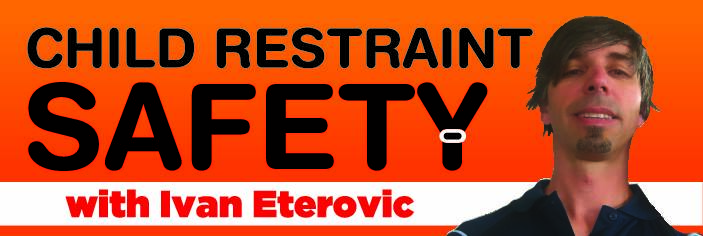Summer is here, which for many of us means long trips in the car to see friends and family, visit the beach or go on holidays.
But before you hit the road, it’s important to ensure your child is properly secured in a correctly fitted car restraint.
You might be surprised at how many of us are failing to do this – an alarming 75 per cent of child restraints are incorrectly fitted or used.
Having a child restraint professionally fitted is at best 10 per cent of child travel safety. The other 90 per cent is the knowledge necessary to use them correctly.
Yet the current situation is that far too many parents fulfilling their child’s travel safety needs by paying for a professional fitting while they stand aside or have a coffee.
I believe it’s important to bring parents into the fitting process. Parents learn about the complexity of child travel safety and how their knowledge is what keeps their child riding safe from birth to adulthood.
Here is my safety checklist:
TETHER/ANCHOR STRAP: This is often too tight or not tight enough. It is common for parents to push and pull on child restraints to test how secure they feel. As a result the strap is over tensioned. An over tensioned strap elevates the vertical angle. For babies this increases the risk of asphyxiation as their necks are to weak to hold up their heavy heads. If not tight enough the seat can dip down too low in a collision, causing excessive force on the child and violent recoil. The rule is: remove all slack from the tether – no more no less.
CONTACT WITH FRONT SEAT: The comfort of the front passenger and/or a more secure feel can lead to front seats pressing up against capsules or rear-facing restraints. In a crash, restraints need move as part of the deceleration process. A fixed seat increases the force on the child. Leave at least two fingers of space between your child’s seat and the front seat.
HARNESS: Many parents go with the finger under the chest for correct harness tension. This is too loose and can allow your child to get their shoulders out meaning severe abdominal and head injuries in a collision. If their shoulders remain harnessed then the child is catapulted into the harness causing injury to the upper body.
TWISTS: It’s important to ensure there are no twists in the harness as twists narrow the surface area and can result in the harness cutting through the child in an accident.
SHOULDER HEIGHT: The harness needs to sit at shoulder level so take this opportunity to check and adjust accordingly. Spinal compression injuries occur from harnesses that sit an inch or more below the shoulder
LOOSE ITEMS: It common to see cars packed with holiday gear yet there is no cage or net. All loose items become a projectile in a collision and a well-fitted car seat cannot protect you from a flying roller skate. Make sure all loose items are secured no mater how small!
*Ivan is the owner of Geelong Child Restraint Fitters. For more information, visit www.facebook.com/babycarseatfitters










